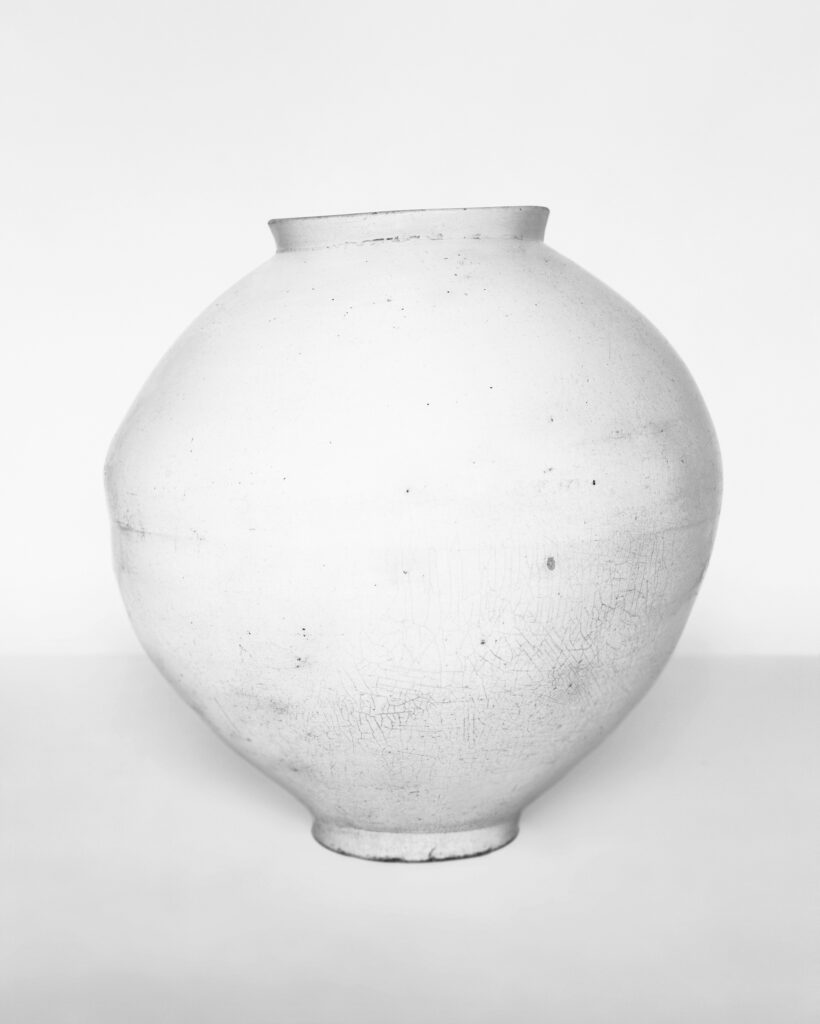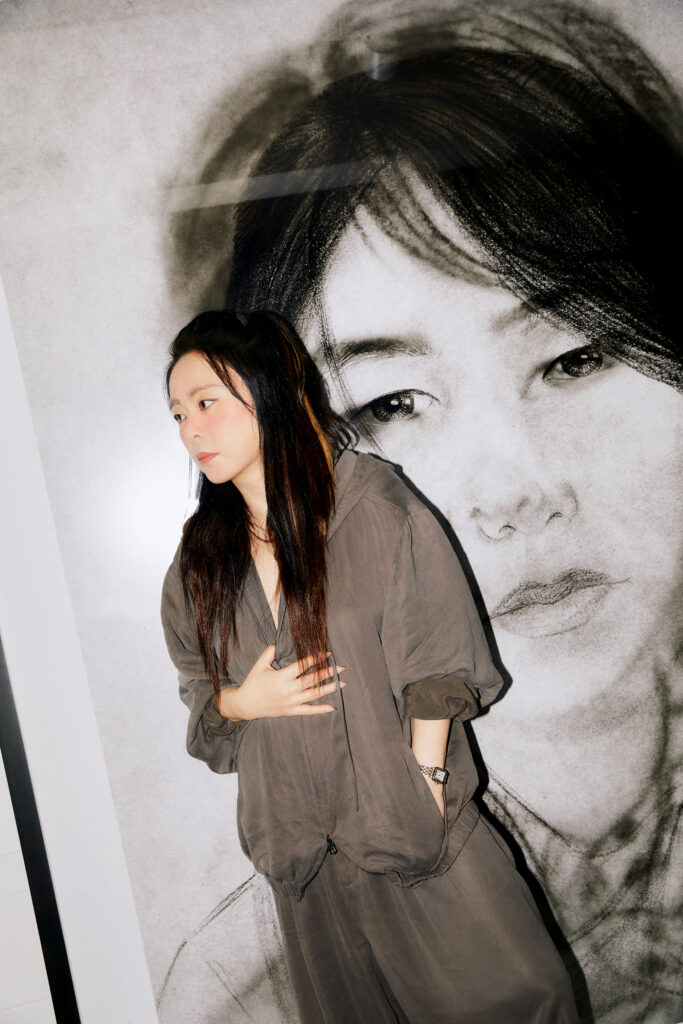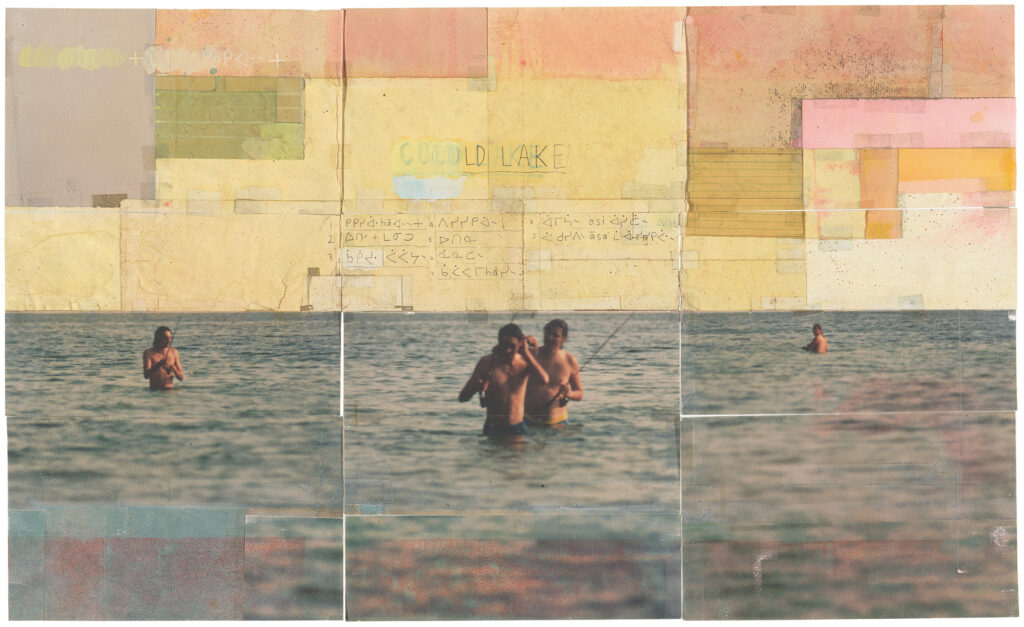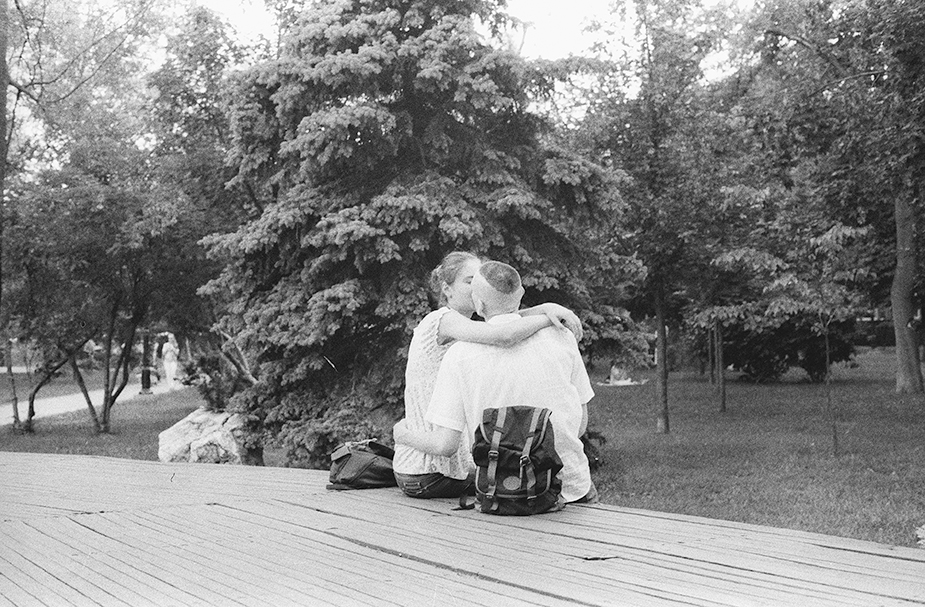
Essays
An Uncanny Chronicle of Ukraine, Before and After the War
What does “Lucky Breaks,” Yevgenia Belorusets’s foreboding book of fiction and documentary pictures, tell us about the cycles of history and myth in Ukraine?
Olga, a resident of Kyiv, is frightened by sunrises, prefers to be called by her full name, considers the patronymic form a kind of company, loathes the times when the city feels empty, and, when it stays that way too long, begins to “see what nobody sees and hear what nobody hears.” She claims to perform acts of transformation—turning a pot of kasha into a hydrangea, a spoon into a blue ribbon, a postcard commemorating International Women’s Day into a trio of matches. She swears this is all true. Depends, of course, on your definition of truth. This is one of the ideas at the heart of Lucky Breaks (2018), a collection of short fiction by the Kyiv-born photographer Yevgenia Belorusets, who intersperses the thirty-two brief stories, intermittently, subtly, with her documentary pictures.
Since the war broke out in Ukraine—the revolution of 2014, that is—another of Belorusets’s characters has lost all sense of beginnings, and now wakes in the afternoon. This woman and her sister, a dishwasher at the American embassy, wear too-large clothes donated to them by Americans. The sister grows so bored of telling the siblings’ story to the journalists, directors, and actors who come asking to hear that she starts replacing their narrative with the various traumas and misfortunes of their friends and neighbors, or with totally invented stories: “convoluted, complicated tales to force someone to really listen to what she was saying.”
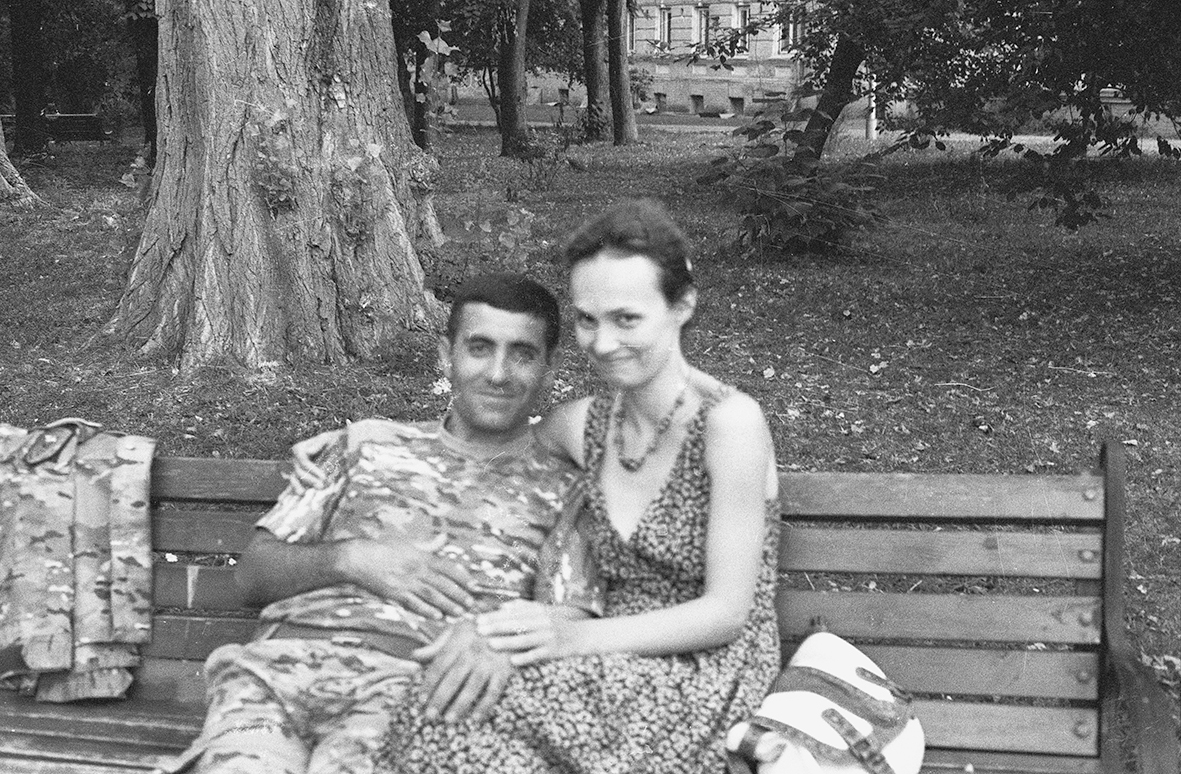
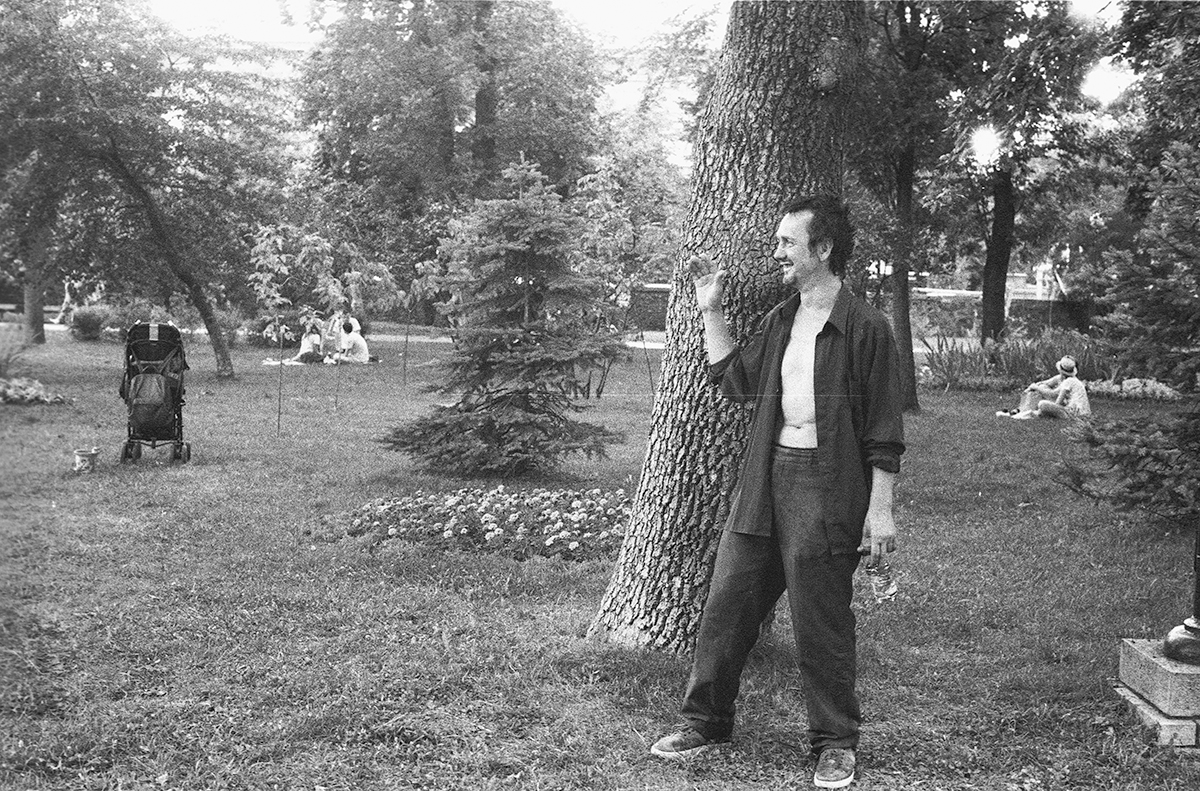
Many of the protagonists in Lucky Breaks may come off as eccentric, probably because they are isolated, which is also because they have been displaced. Most are women. They fled the Donbas region in eastern Ukraine, site of the conflicts of 2014, or they have to move away to earn a living, or their husbands are gone for months on end, also for work. The characters in the story “The Stars” finally begin to venture out of their basement shelters by charting the hours in which a newspaper column declares them astrologically safe—all clear for a Pisces to emerge between three and five in the afternoon, while a Scorpio is allowed out into the evening for a walk in a city “both smoky and bright.” Even as long lines of “soiled and sullen” cars exit her city, the title character of the story “My Sister” is determined to stand her ground, no matter that she’s almost all alone, surrounded by broken windowpanes and cords that snake in and out of other apartment windows attempts to steal electricity by others who have refused to leave.
Snaking along, too, below the current of the subjects of the short stories of Lucky Breaks is a fugitive stream of black-and-white pictures made by the author. Belorusets, as translator Eugene Ostashevsky writes in an afterword to the 2022 US edition, came to writing from her life in photography, in which she uses “documentary methods,” and she’d arrived at photography via a life in political and social activism. Her photographic series have focused on animals, brick-factory workers in west Ukraine, queer and trans families throughout the country, the residents of Roma settlements under attack by the far right, and protesters during the revolution of 2014, also known as the Revolution of Dignity. Russian special-ops and troops disguised as locals embedded in the fighting in the Donbas had turned the region into a surreal world in which notions of truth became increasingly murky—a fog of war that in the book Belorusets coats with photography.
Here and there in Lucky Breaks are pictures of abandoned-looking industrial buildings; a grinning, uniformed worker; persons sleeping in the grass. They are pulled, without identifying marks, from two of her documentary series: one, a project depicting people hanging out in parks—the dislocated feeling of leisure during wartime; the other, of the employees of a government-run coal mine who in 2015 and 2016 formed a protest to avert ecological disaster in their homeland, demanding that the mine’s closure adhere to environmental standards.
None of this background is apparent in Lucky Breaks, whose themes already verge on the Gogolian absurd. Dislodged from their original context, thrown into the realm of fiction, her images add a semblance of authenticity—the “presence of the thing,” as Roland Barthes put it, presumably assuring a more skeptical eye—in a place where reality has been upended. At the same time, her inclusion of the photographs plays on the reader’s inherent desire for concrete evidence. At second glance, the picture asks more than it answers.

Lucky Breaks pushed Belorusets to look further into the unknown. In 2021, she published Modern Animal, her second book of fiction but her first published in English—a short, surreal novel told through diaristic accounts, fairy tales, and a series of lectures, some of which are delivered by animals. As in her photography, Belorusets had used documentary methods before she began to write, sometimes collaborating with her human interview subjects to transform the material of their conversations into fiction—”a kind of contemporary folk literature,” according to one of her editors, Sebastian Clark, of the subscription-based imprint Isolarii. Like Lucky Breaks, Modern Animal includes some of Belorusets’s photographs—the series Zhyvy Kutochok (The Living Corner) (2019–21) of chickens and cows on a farm, dogs, and birds of prey.
Shown in black and white, certain of her images-especially the closely depicted owls and hawks, and the sense of calm that seems to surround her cows and calves-aspire to the sensibility of Peter Hujar’s magnificently secret and intimate photographs of animals. In one sense they are Belorusets’s attempt to redress the hierarchical relationship of humans and animals taught in Soviet-style education—one in which schoolchildren learned to take care of plants and animals that were kept in a dark, small “living corner” of the classroom. “At that time, it was taught that the human being was the pinnacle of creation and animals were just tools,” she said in an interview with Palm, the online magazine from the Paris museum Jeu de Paume.
“Pictures, if you think about it, are a kind of cage for animals,” she continued. “In the book, text and images work in parallel. The photographs are not illustrative of the story, but arise from the same kind of interrogation.” Her desire to photograph animals was grounded in her awareness of the fact that she would never be able to fully know them.
When she photographed and interviewed residents of the Donbas during wartime in 2014, Belorusets often felt like “a guest in a catastrophe.”
The English translation of Lucky Breaks was first published in the United States on March 1, 2022, five days after Russia invaded Ukraine. Belorusets has said that when she photographed and interviewed residents of the Donbas during wartime in 2014, she often felt like “a guest in a catastrophe,” someone who had a home to return to. Photographing and writing short stories had prepared her for the events of February 24, 2022, only in the sense that, when Russia invaded Kyiv, as she wrote in her diary, “my body memory kicked in.” That memory, coupled with shock, soon came to register as grief, and the recognition that the war was a continuation of the work she had already begun, as she also found herself doing things she had imagined for her fictional wartime characters. It gave Lucky Breaks an added layer of eeriness, although most of the eeriness of the book has to do with the cycles of historical time and myth embedded within the tales.
For the first forty-one days of war, Belorusets continued to keep a diary, which was published as a daily online dispatch and eventually collected as In the Face of War (which includes her photographs as well as works by historical artists such as Maria Prymachenko and Tetyana Yablonska, and the contemporary artists Nikita Kadan and Lesia Khomenko), also published by Isolarii. Isolarii titles are designed as tiny volumes, the size of a small cell phone or a pocket hymnal. Each book, even one that amounts to 444 pages, as this one does, fits in the palm of your hand. You are conscious of the sensation of physically holding the first unsettling weeks of the war. In those days, Belorusets compulsively photographed, mostly in color, the things around her—perhaps the most common impulse in photography, to preserve the sense of something before it disappears altogether. She did it, she writes in an afterword, “to somehow interrupt the flow of this particular, unbearable story.” And yet, she was caught in the position of preserving a story she herself had written, with uncanny, disorienting prescience.


With Lucky Breaks, Belorusets had been operating in the vein of others before her who have inserted photographs into literary texts, but especially W. G. Sebald, whose melancholic-cosmic novels of time, memory, and the aftermath of war—Vertigo, The Emigrants, The Rings of Saturn, and Austerlitz—famously interweave uncaptioned photographs within the twisting narratives that wander alongside their forever rambling protagonist as he falls into digressive encounters with strange fellow travelers, stepping into a great pool of time.
No one likes to be duped, but some people don’t like to have a good time. Some of Sebald’s critics, like all overly literal-minded readers, spend too much energy worrying about what stories and images he may or may not have borrowed or embellished, invented or not, which stories came from familiar photo albums and which came from unknown subjects of photographs sold by antique dealers—which is to miss out on the pleasures and lessons of his books. It is to miss the notes of comedy in his writing, and in the interplay between word and image.
In an essay for the New Yorker praising the too rarely observed humor in Sebald’s work, the writer James Wood locates the comic in the photographs in the books, particularly in the “self-conscious antiquarianism” of Sebald’s unnamed first-person narration: the existence of “an otherworldliness of the present. His very prose functions like an old, unidentified photograph.” The haunting cover image of Austerlitz—an old photograph of a young boy in a field, wearing an outfit as aristocratic as those in a Rembrandt-could not be “of” Jacques Austerlitz, an invented character. But did the picture itself make it seem as if it could be? When Wood, examining the photograph in the author’s archive, flipped it over, he found a junk dealer’s penciled-in price: 30 pence. “Scandalously,” Wood writes, “where documentary witness and fidelity is sacred, Sebald introduces the note of the unreliable.” The greater issue, he proposes, is whether Sebald’s use of that particular photograph implied a more direct connection to the historical events of the book.
Perhaps we’re meant to question these things, and that’s part of the point—not that Sebald was the sort of writer who had “a” point. For a writer such as Belorusets, whom I would call an indirect descendant of Sebald’s, both photograph and story seem to gain power the more assiduously she calls their veracity into question. “Any document is partly a lie,” Belorusets has said, “and this is especially true of documentary photography, which only ever conveys a small part of reality.”
Like the found photographs of Sebald’s novels, Belorusets’s repurposing of her own pictures allows them to function as enigmas. Rather than illustrate, they suggest the feeling of a world. Rather than dutifully serve the plot, they tend to shift the attention elsewhere. In place of proof, they respond in dreamlike fragments, deliberately casting doubt. Sometimes her photographs misbehave, like punchlines. Reminiscent of the isolated, dream-spinning Silesian narrators of Olga Tokarczuk’s House of Day, House of Night, the protagonist of Belorusets’s “The Seer of Dreams” insists on her fantastic somnambulant visions of ancient Ukraine, of rivers of blood, of elephants wearing embroidered saddles.
The seer’s final divination of the story—of a prophetic, two-headed dog who forecasts images of prosperity and happiness—is instantly undercut by the mortal intrusion of Belorusets’s own photograph, of what appears to be a miners’ locker room, with shelves of rusted tools and hard hats and coffee mugs. Is this a joke on the dreamer or on the reader? Does it matter? Do we even have to ask?
This essay is drawn from Rebecca Bengal’s collection Strange Hours: Photography, Memory, and the Lives of Artists (Aperture, 2023).



